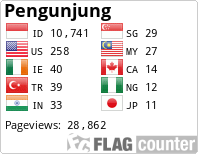Asuhan Keperawatan Pada Pasien Dengan Batu Ginjal Post Operasi Extended Pyelolitotomi Kiri Dan Ganti Dj Stent Dengan Intervensi Mobilisasi Dini Untuk Mengurangi Intensitas Nyeri Di Ruang Anggrek C Rumah Sakit Umum Kabupaten Tangerang
DOI:
https://doi.org/10.55606/jrik.v4i1.3522Keywords:
Nursing Care for Patients with Postoperative Kidney StonesAbstract
Nephrolithiasis is the formation of hard material resembling stones originating from minerals and salts in the kidneys. Risk factors for kidney stones are frequent holding in urine, obesity, lack of drinking, urinary tract infections, and heredity. The prevalence of kidney stones in Indonesia is 6 per 1000 population or 1,499,400 people suffer from kidney stones. Various medical procedures can be performed to treat kidney stone cases, one of which is surgery. Post-operative kidney stone patients generally complain of pain and experience physical immobility problems related to the presence of surgical wounds. Nurses play a role in providing nursing care by carrying out pain management and carrying out early mobilization to train the muscle system and nervous system after surgery. The aim of writing this scientific paper is to be able to apply the theory and concept of applying early mobilization to reduce pain intensity in patients with Kidney Stones Post Surgery Extended Left Pyelolithotomy and Replace DJ Stent in Anggrek C Room, Tangerang General Hospital. The writing method used is a case study with a nursing care approach. Based on the results of the study and data analysis, 3 nursing diagnoses were found, namely: pain, physical immobility disorders, and risk of infection. After intervention and evaluation for 3 x 24 hours, data was obtained that the problem of pain and physical immobility disorders was partially resolved, this was indicated by a decrease in pain intensity and increased movement of the patient's extremities, while the problem of risk of infection had not been resolved so the intervention was continued. Nurses are expected to be able to carry out comprehensive assessments, make appropriate diagnoses, plan interventions, carry out evaluations and follow-up
Downloads
References
Hadibrata, E., Tjahjo, M. D., Fadli, M. Y., Priyono, A. H., Spesialis, D., Urologi, B., Kedokteran, F., Lampung, U., Umum, D., Kedokteran, F., & Lampung, U. (2020). Efikasi Dan Keamanan Extracorporeal Shock Wave Lithotripsy (ESWL) Tipe Piezoelektrik Pada Pasien Batu Ginjal The Efficacy and Safety of Piezoelectric Type Extracorporeal Shock Wave Lithotripsy (ESWL) As Management of Kidney Stone Patients. 4, 122–127.
Kementrian Kesehatan RI. 2018. Profil Kesehatan Indonesia 2017. Jakarta: Kemenkes RI.
Khan, S. R., Pearle, M. S., Robertson, W. G., Gambaro, G., Canales, B. K., Doizi, S., Traxer, O., & Tiselius, H. G. (2016). Kidney stones. Nature Reviews Disease Primers, 2, 1–23 https://doi.org/10.1038/nrdp.2016
Russari, I. (2016). Sistem Pakar Diagnosa Penyakit Batu Ginjal Menggunakan Teorema Bayes. Jurnal Riset Komputer (JURIKOM), 3, 18–22.
TIM POKJA PPNI SDKIDPP. (2018). STANDAR DIAGNOSIS KEPERAWATAN INDONESIA. DPP PPNI.
TIM POKJA SDKI DPP PPNI. (2017). STANDAR DIAGNOSIS KEPERAWATAN INDONESIA DEFINISI DAN INDIKATOR DIAGNOSTIK. DPPPPNI.
TIM POKJA SIKI DPP PPNI. (2018). Standar Intervensi Keperawtan Indonesia (1st Ed.). DPPPPNI.
TIM POKJA SLKI DPP PPNI. (2019). Standar Luaran Keperawatan Indonesia (1st Ed.). DPPPPNI.
Triana Arisdiani, & Livana PH. (2018). Hubungan Dukungan Keluarga Dengan Ansietas Mobilisasi Dini Pasien Post Operasi 1 2. 207–211.Https://Doi.Org/10.26699/Jnk.V5i3.ART.P207-211.
Downloads
Published
How to Cite
Issue
Section
License
Copyright (c) 2023 Jurnal Rumpun Ilmu Kesehatan

This work is licensed under a Creative Commons Attribution-NonCommercial-ShareAlike 4.0 International License.









